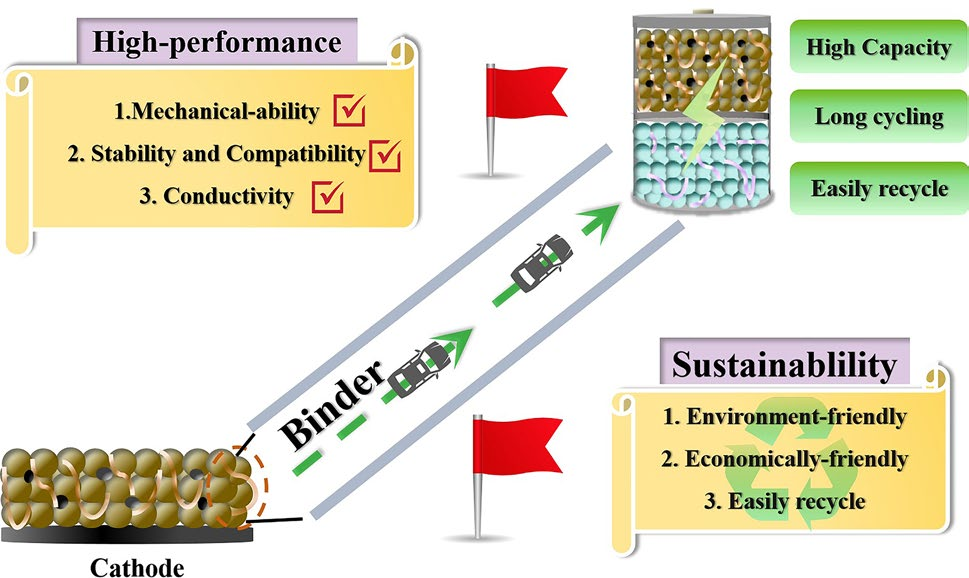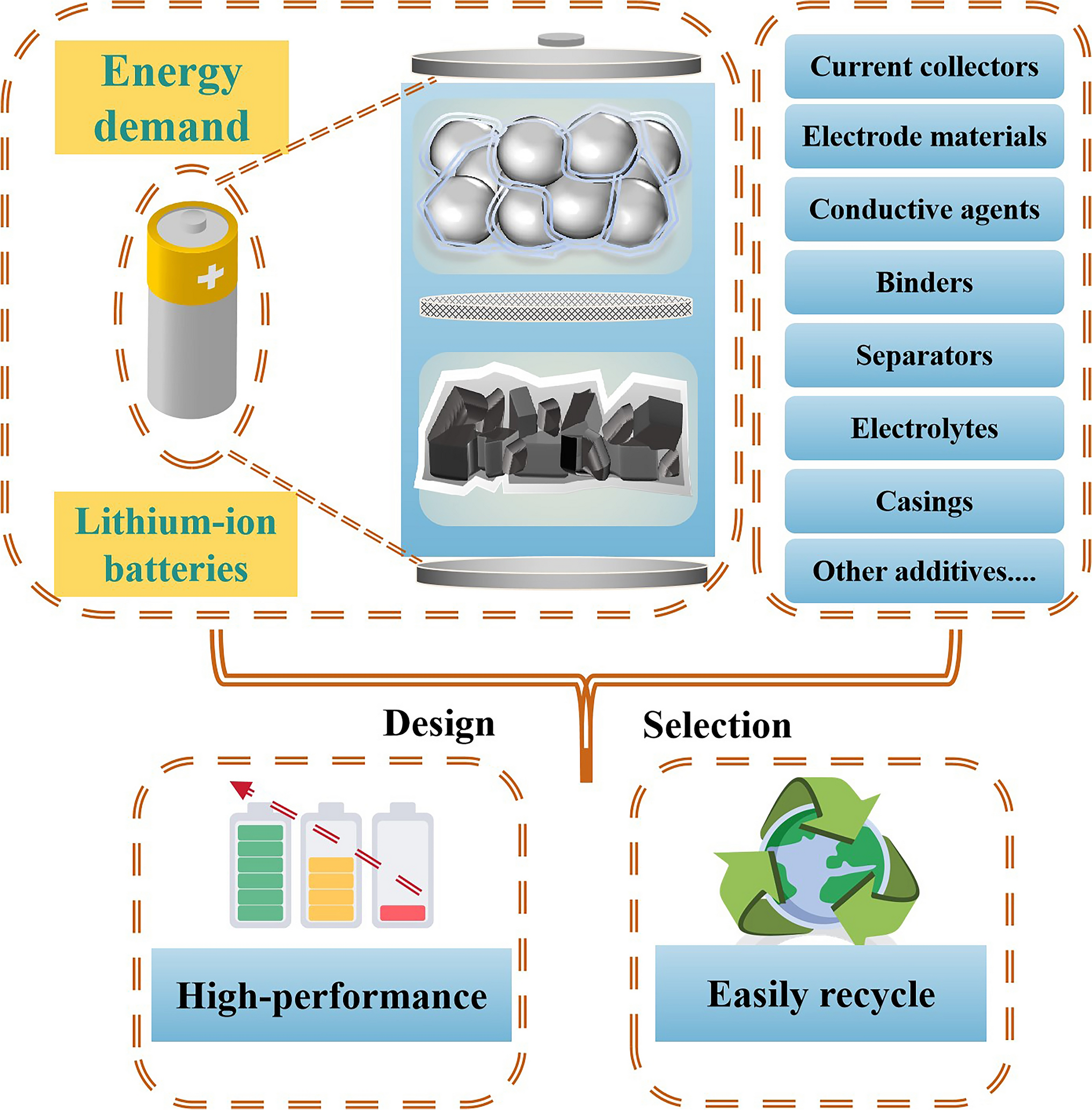Tackling Challenges and Exploring Opportunities in Cathode Binder Innovation

A research team led by Professors Li Wang, Yude Wang, and Xiangming He has published a comprehensive review in Nano-Micro Letters on recent advances in cathode binder design for lithium-ion batteries (LIBs). This work highlights the overlooked but critical role of binders in ensuring long cycling stability, safety, and sustainable development of LIBs, with a particular focus on LiFePO4 (LFP) and transition-metal oxide cathodes.
Why Cathode Binders Matter
- Structural Integrity: Binders adhere active materials, conductive additives, and current collectors, preventing particle detachment and electrode cracking.
- Charge Transport: Binder properties influence ionic/electronic pathways, directly affecting capacity and rate performance.
- Limitations of PVDF: While widely used, PVDF suffers from weak adhesion, poor conductivity, low thermal stability, and reliance on toxic N-methylpyrrolidone (NMP).
Design Strategies for Next-Generation Binders
- Mechanical Reinforcement: Cross-linked networks, nanostructured frameworks, and elastic polymers enhance adhesion and flexibility to withstand volume changes.
- Sustainability: Water-based binders such as carboxymethyl cellulose (CMC), chitosan derivatives, and polyacrylic acid reduce environmental risks and manufacturing costs; semi-dry and dry processing methods further lower energy consumption.
- Conductivity Enhancement: Conductive polymers, ionic liquids, and hybrid organic–inorganic systems create continuous ion/electron channels, improving rate capability.
- Stability Improvements: Functional groups and composite architectures mitigate transition-metal dissolution, suppress side reactions, and improve thermal and chemical tolerance.
Mechanistic Insights
- Interface Regulation: Functional binders stabilize electrode–electrolyte interfaces and minimize parasitic reactions.
- Stress Buffering: Self-healing or elastic binders accommodate structural expansion/contraction during cycling.
- Active Material Distribution: Optimized systems promote uniform dispersion, reducing polarization and enhancing efficiency.
Performance Highlights
- Cycling Life: Advanced binders enable stable operation for hundreds of cycles with minimal capacity fading.
- High-Rate Capability: Conductive designs sustain strong performance under fast charge/discharge conditions.
- Thermal Tolerance: Novel binders protect cathodes under elevated temperatures, maintaining capacity retention.
Future Outlook
Cathode binder research is evolving from incremental optimization to multifunctional integration, with growing recognition of its decisive role in LIB performance and sustainability. Future directions include:
- Multifunctional Systems: Combining adhesion, conductivity, and self-healing within a single binder.
- Green Manufacturing: Developing scalable water-based, semi-dry, and dry processes that eliminate toxic solvents.
- High-Voltage and Solid-State Adaptation: Engineering binders to stabilize interfaces, suppress metal dissolution, and ensure efficient ion transport under challenging conditions.
By linking molecular-level design principles with device-level requirements, this review provides a roadmap for binder innovation, highlighting how low-cost yet high-impact advances in binder chemistry can enable safe, efficient, and sustainable next-generation lithium-ion batteries.
Follow the Topic
-
Nano-Micro Letters

Nano-Micro Letters is a peer-reviewed, international, interdisciplinary and open-access journal that focus on science, experiments, engineering, technologies and applications of nano- or microscale structure and system in physics, chemistry, biology, material science, and pharmacy.






Please sign in or register for FREE
If you are a registered user on Research Communities by Springer Nature, please sign in